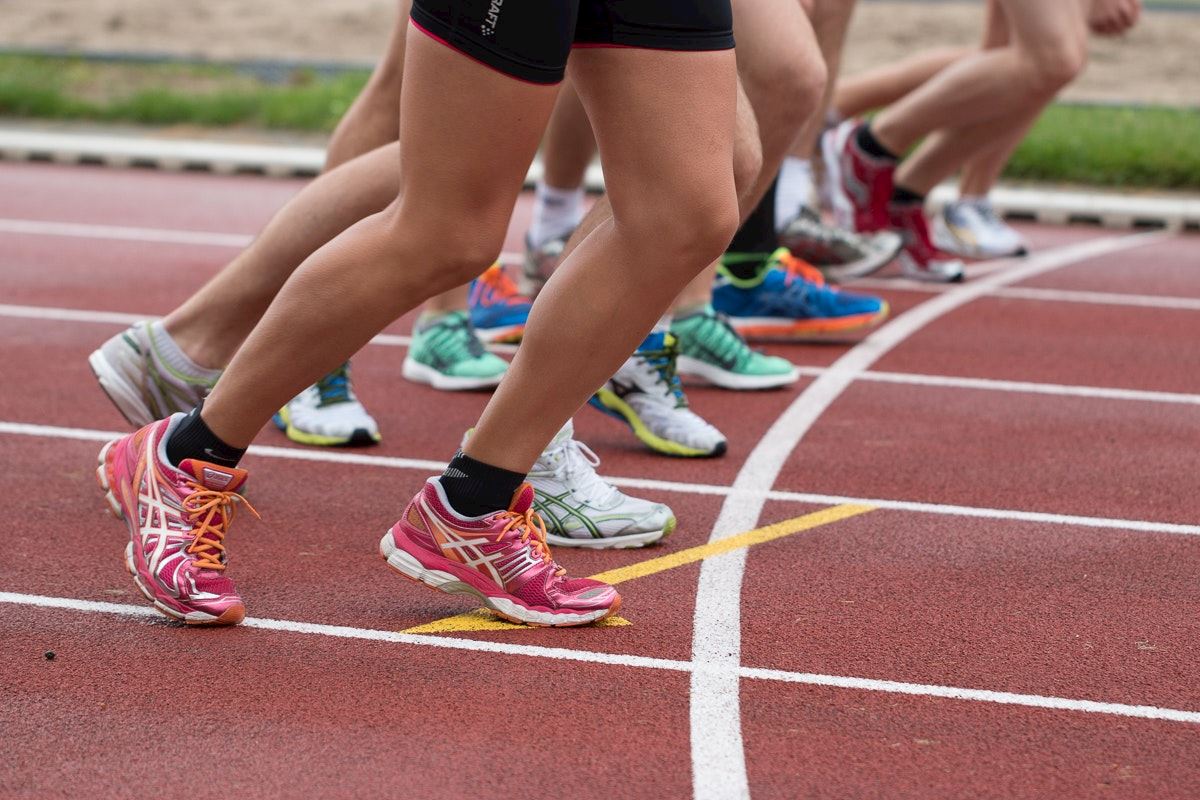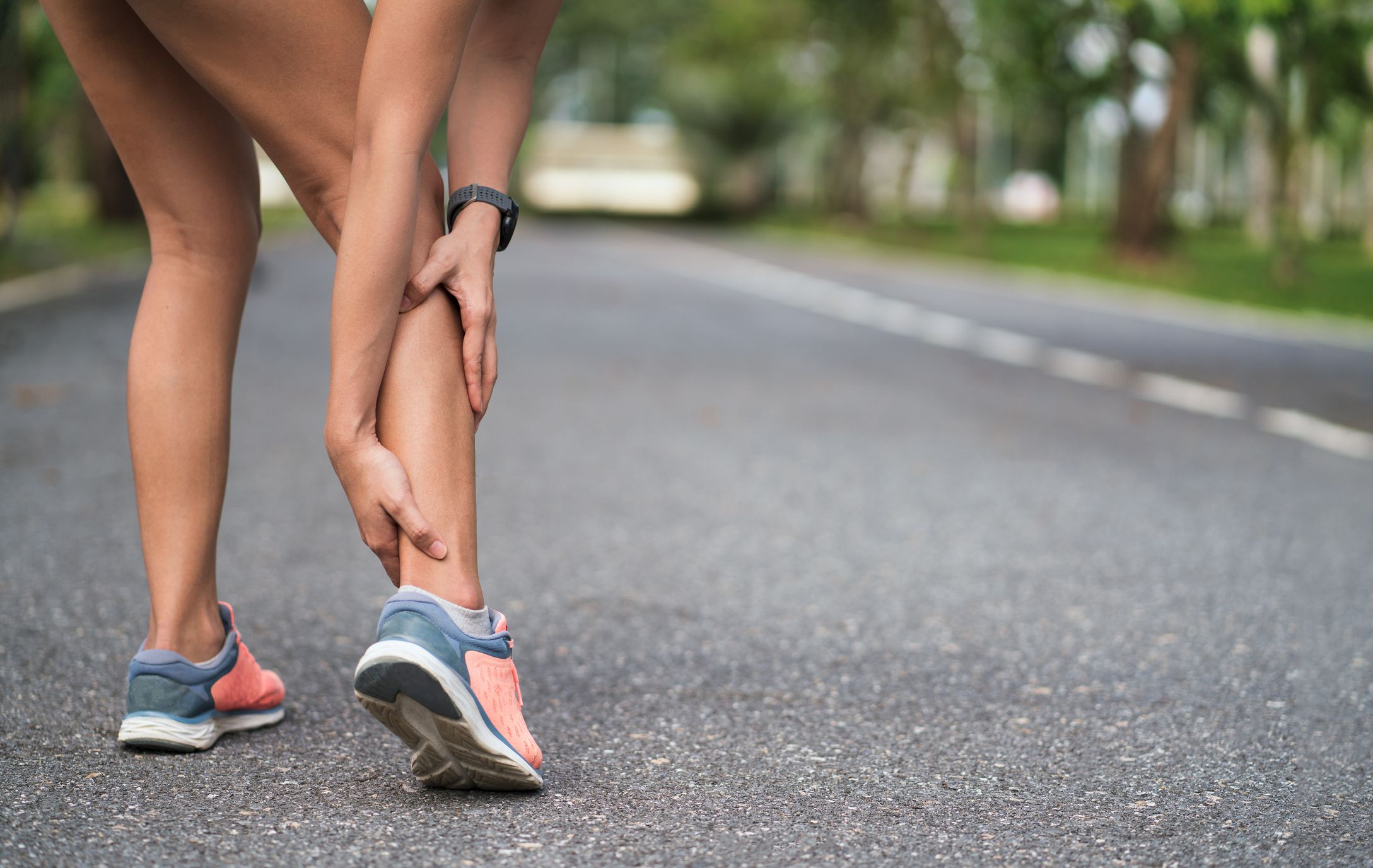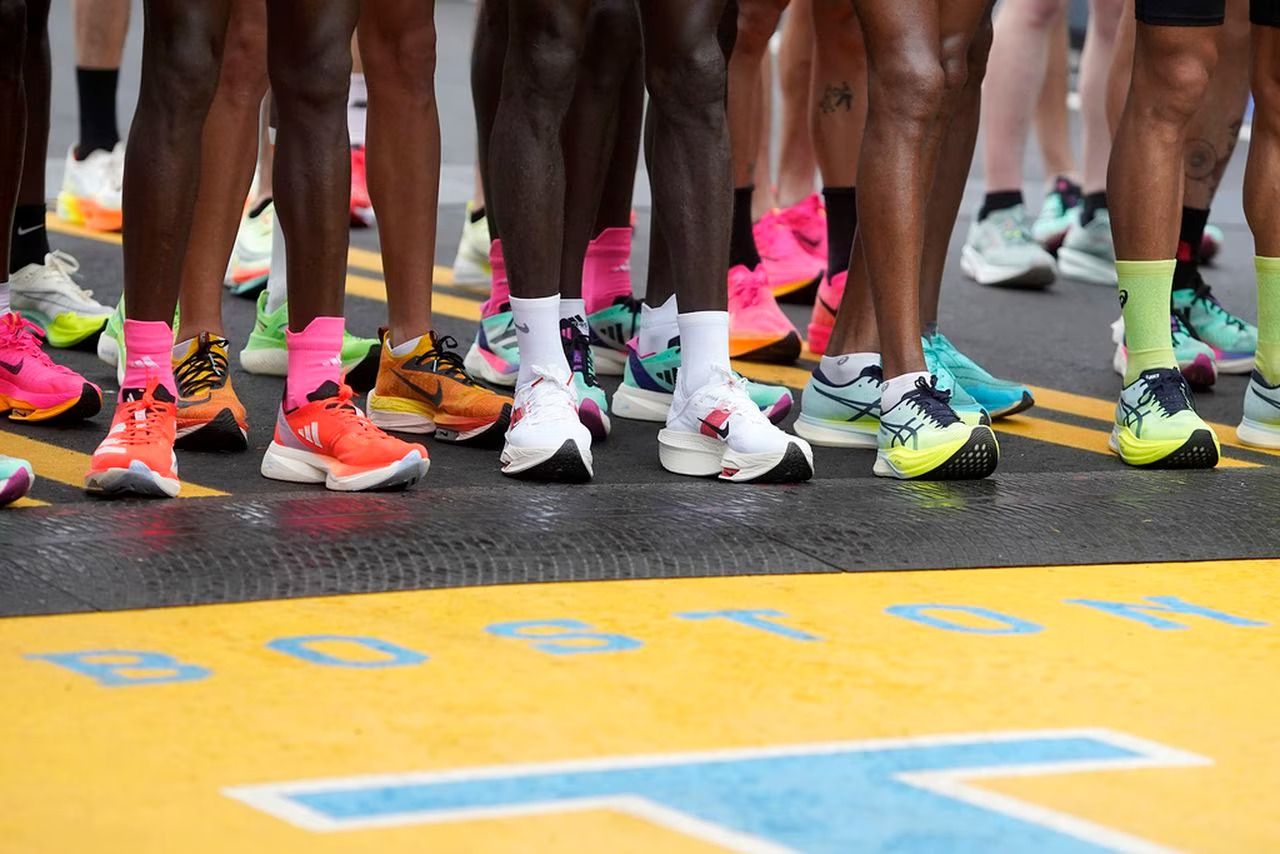Home>Misc>Featured>How Often Should You Take Energy Gels During A Marathon


Featured
How Often Should You Take Energy Gels During A Marathon
Modified: August 19, 2023
Discover the featured article on how often you should take energy gels during a marathon. Learn the optimal strategy to maximize your performance and fuel your run.
Introduction
Marathons are grueling tests of endurance and require athletes to fuel their bodies properly to sustain optimal performance throughout the race. While proper hydration and nutrition play vital roles in marathon success, many runners also turn to energy gels as a convenient and efficient way to boost their energy levels during the race.
Energy gels are concentrated carbohydrate supplements that are specifically designed to provide an immediate source of energy during intense physical activity. They are typically taken orally and quickly absorbed by the body, making them a popular choice among marathon runners.
However, one common dilemma that runners face is determining the ideal frequency and timing for consuming energy gels during a marathon. How often should you take energy gels to maximize their benefits without risking digestive issues? This article aims to provide some guidance on this topic.
It’s essential to understand that every runner is different, and there is no one-size-fits-all answer to the question of gel consumption during a marathon. Several factors should be taken into consideration, including the duration of the race, the runner’s individual tolerance to gels, and personal preferences.
Throughout this article, we will explore the factors that contribute to the efficacy of energy gels, provide recommendations on timing for gel consumption, and discuss potential side effects that runners should be aware of. By the end, you’ll have a better understanding of how to integrate energy gels into your marathon strategy and optimize your performance on race day.
What Are Energy Gels?
Energy gels are portable, single-serving packets of concentrated carbohydrates that provide a quick and easily digestible source of fuel for athletes during physical activity. They are popular among endurance athletes, particularly marathon runners, for their convenience and ability to provide an instant energy boost.
These gels are typically made with a combination of simple and complex carbohydrates, such as glucose, fructose, and maltodextrin. These carbohydrates are readily absorbed by the body and converted into glucose, the primary source of energy for the muscles.
Energy gels also often contain electrolytes, such as sodium and potassium, which help maintain hydration and balance electrolyte levels in the body. Some gels may also include amino acids, caffeine, or other performance-enhancing ingredients. It’s important to read the labels and choose gels that align with your specific nutritional needs and preferences.
The consistency of energy gels can vary, ranging from a thin, watery texture to a thicker, more gel-like consistency. This allows athletes to choose the consistency that they find most comfortable to consume while running.
One of the main advantages of energy gels is their compact size. They are easily portable, making them convenient for long-distance events where carrying bulky snacks or drinks may be impractical. Athletes can carry multiple gels in a small waist pack or stash them in their pockets for easy access during the race.
Energy gels offer a quick source of carbohydrates and electrolytes that can be rapidly absorbed by the body. This allows runners to replenish their energy stores and prevent the onset of fatigue during a marathon. However, it’s important to note that energy gels should be used in conjunction with proper hydration, as they can be more effective when consumed with fluids.
In summary, energy gels are portable, easy-to-consume packets of concentrated carbohydrates that provide a quick and efficient source of fuel for endurance athletes. They offer a combination of carbohydrates, electrolytes, and often other performance-enhancing ingredients to support optimal performance during long-distance events like marathons.
Energy Gels and Marathon Performance
Marathons are a test of physical and mental endurance, and proper nutrition plays a crucial role in optimizing performance. Energy gels have become a popular choice among marathon runners due to their convenience and ability to provide a quick source of energy. But how do energy gels actually impact marathon performance?
During a marathon, the body relies on glycogen, which is stored in the muscles and liver, as its primary fuel source. However, glycogen stores are limited and can become depleted during prolonged exercise. This can lead to a decline in performance, as the body struggles to sustain the necessary energy levels.
Energy gels offer a concentrated source of carbohydrates, providing a quick boost of energy to replenish glycogen stores. By consuming energy gels during a marathon, runners can delay the onset of fatigue and maintain a steady pace for a longer period of time.
Furthermore, energy gels can help prevent a sudden drop in blood sugar levels, also known as hypoglycemia, which can lead to dizziness, weakness, and a decline in overall performance. By providing a readily available source of glucose, energy gels help maintain stable blood sugar levels throughout the race.
Aside from providing carbohydrates, some energy gels also contain caffeine. Caffeine is a stimulant that can enhance alertness and reduce perceived exertion. It can also improve endurance by enhancing the body’s utilization of fat as a fuel source. However, it’s important to note that individual responses to caffeine may vary, and excessive consumption can lead to unwanted side effects such as jitters or gastrointestinal discomfort.
Timing is key when using energy gels during a marathon. It’s recommended to begin consuming gels approximately 45 minutes to an hour into the race, as this is when glycogen stores start to deplete. From there, runners can continue to take gels every 45 minutes to an hour, depending on their individual needs and tolerance.
It’s important to practice gel consumption during training runs to determine what works best for you. Some runners may find that taking a gel every hour provides sufficient energy, while others may need more frequent gel intake. Experimenting with different strategies in training will help you fine-tune your marathon fueling plan.
Overall, energy gels can be a valuable tool in improving marathon performance. They provide a convenient and efficient way to replenish glycogen stores, maintain blood sugar levels, and potentially enhance endurance through ingredients like caffeine. However, it’s essential to find the right balance and listen to your body’s needs and responses to optimize their benefits during a marathon.
Factors to Consider
When it comes to deciding how often to consume energy gels during a marathon, there are several important factors to consider. Tailoring your gel consumption strategy to your individual needs and race conditions can greatly impact your overall performance. Here are some key factors to keep in mind:
1. Duration of the race: The length of the marathon will play a role in determining gel consumption. For shorter races, such as a half marathon, one or two energy gels may be sufficient. However, for full marathons or ultra-marathons, which can last several hours, more frequent gel intake will likely be necessary to sustain energy levels.
2. Personal tolerance: Every runner is unique, and individual tolerance to energy gels can vary. Some runners may have a higher tolerance for consuming gels, while others may experience digestive issues or discomfort with excessive gel intake. It’s important to experiment during training to determine your own tolerance and find the right balance.
3. Hydration strategy: Energy gels work best when consumed with water or an electrolyte drink. Hydration plays a crucial role in optimizing gel absorption and preventing gastric distress. Incorporating a well-balanced hydration strategy alongside gel consumption is essential for maintaining optimal performance.
4. Training adaptations: Your training program can also influence gel consumption during a marathon. If you consistently train your body to rely on stored glycogen and optimize energy utilization, you may require fewer gels during the race. On the other hand, if you tend to deplete glycogen stores quickly, a more frequent gel intake may be necessary.
5. Personal preferences: Your personal taste and preferences will also play a role in determining gel consumption. Some runners may prefer the texture or flavor of certain brands, while others may find them unappealing. Finding gels that you enjoy consuming can make the experience more pleasant and encourage adherence to your fueling strategy.
Considering these factors will help you develop a gel consumption plan that suits your specific needs and maximizes your marathon performance. Remember, what works for one runner may not work for another, so it’s crucial to take the time to understand your body and experiment with different strategies during training runs.
Recommended Timing for Taking Energy Gels
Timing is crucial when it comes to consuming energy gels during a marathon. Proper timing ensures that you receive the maximum benefit from the gels without experiencing digestive issues. While individual strategies may vary, here are some general guidelines for timing your gel consumption:
1. Pre-race: It’s recommended to consume a gel approximately 15-30 minutes before the start of the race. This helps ensure that your body has an immediate source of energy as soon as you begin running. However, it’s important to stay hydrated by drinking water or an electrolyte beverage alongside the gel.
2. Early to mid-race: Depending on the duration of the race, it’s advisable to start taking energy gels approximately 45 minutes to an hour into the marathon. This timing allows you to replenish glycogen stores as they begin to deplete. Taking a gel at regular intervals, usually every 45 minutes to an hour, helps maintain a steady supply of energy throughout the race.
3. Water stations: When consuming energy gels during a marathon, it’s essential to have access to water or an electrolyte drink at the race’s water stations. Taking gels without proper hydration can result in stomach discomfort and inadequate absorption of nutrients. Use the water stations strategically and drink enough fluids to facilitate gel digestion and hydration.
4. Late-race: As the marathon progresses, you may find it beneficial to increase your gel intake. This is especially true if you feel your energy levels waning or if you anticipate a challenging portion of the race, such as a hill or a final push towards the finish line. Tailoring your gel consumption to meet the demands of the race’s latter stages can help you maintain a strong pace and finish strong.
5. Practice during training: It’s important to practice your gel consumption strategy during training runs to fine-tune your timing. Experimenting with different intervals and quantities can help you gauge what works best for your body and optimize your performance on race day. Training is the ideal time to test different strategies and make adjustments before the marathon.
While these are recommended guidelines, it’s crucial to listen to your body and make adjustments as necessary. Everyone’s nutritional needs and gel tolerance can vary, so it’s important to find the timing that works best for you. Keeping a consistent and strategic gel consumption plan will help sustain your energy levels and enhance your marathon performance.
Individual Differences in Gel Consumption
When it comes to gel consumption during a marathon, it’s important to recognize that individual differences play a significant role. What works for one runner may not work for another, and finding the right gel consumption strategy that suits your body and preferences is key. Here are some factors to consider:
1. Metabolic rate: Each individual has a unique metabolic rate, which determines how quickly their body breaks down and utilizes energy. Runners with a faster metabolic rate may require more frequent gel consumption to sustain energy levels, while those with a slower metabolic rate may need less frequent gel intake.
2. Training and nutritional adaptations: The training and nutritional adaptations you make leading up to a marathon can also influence how your body responds to gel consumption. For example, if you have trained your body to efficiently utilize stored glycogen and rely on fat as a fuel source, you may require fewer gels during the race. On the other hand, if you have not optimized your nutrition or endurance training, you may need more frequent gel intake.
3. Personal preferences: Personal taste and preferences can greatly impact how often you consume energy gels. Some runners may find that consuming gels every 45 minutes works well for them, while others may prefer a gel every hour or even more frequently. Experimentation during training runs is crucial to find the gel consumption pattern that suits your palate and digestion.
4. Digestive sensitivity: Some runners may have a more sensitive digestive system and may experience discomfort or gastrointestinal issues with certain gels or with consuming gels too frequently. It’s important to listen to your body and make adjustments accordingly. You may need to choose gels with different formulations or adjust the timing and quantity of consumption to alleviate digestive problems.
5. Practice and experience: Your gel consumption strategy will likely evolve as you gain more experience and practice during training runs and races. As you become more familiar with your body’s needs and responses, you can fine-tune your gel consumption timing and quantity to optimize your performance. Being open to learning from your experiences and making adjustments along the way is key.
Ultimately, finding the balance and figuring out the ideal gel consumption pattern for marathon success is a highly individualized process. It involves experimentation, listening to your body, and understanding your unique metabolic needs and sensitivities. By being mindful of these individual differences, you can optimize your gel consumption strategy to fuel your marathon performance effectively.
Potential Side Effects of Energy Gels
While energy gels can be a convenient and effective source of fuel for marathon runners, it’s important to be aware of potential side effects that may arise from their consumption. Here are some common side effects to consider:
1. Gastrointestinal Distress: One of the most common side effects experienced by runners who consume energy gels is gastrointestinal distress. This can manifest as stomach cramps, bloating, diarrhea, or nausea. Gels, especially when consumed in large quantities or without sufficient hydration, can be difficult for some individuals to digest, leading to gastrointestinal issues. Experimenting during training runs can help determine your tolerance and identify any potential triggers for digestive problems.
2. Sugar Crash: Energy gels provide a quick source of carbohydrates, which can lead to a rapid rise in blood sugar levels. However, this spike in blood sugar is often followed by a subsequent drop, also known as a sugar crash. This can result in feelings of fatigue, dizziness, and a decline in overall performance. It’s important to balance gel consumption with other sources of nutrition and hydration to avoid drastic fluctuations in blood sugar levels.
3. Dehydration: Energy gels are most effective when consumed with fluids, as they require water for proper digestion and absorption. Failing to drink enough water or electrolyte drinks alongside gel consumption can lead to dehydration. This is especially important during longer races where maintaining hydration is crucial for performance and overall well-being.
4. Caffeine Sensitivity: Some energy gels may contain caffeine as an additional performance-enhancing ingredient. While caffeine can provide a boost in energy and alertness, some individuals may be more sensitive to its effects. Excessive caffeine consumption can result in jitters, increased heart rate, and even gastrointestinal discomfort. It’s crucial to know your body’s response to caffeine and moderate your gel consumption accordingly.
5. Allergic Reactions: It’s rare but possible to experience an allergic reaction to the ingredients in energy gels, such as certain types of sweeteners or flavorings. If you have a known allergy or sensitivity, it’s important to carefully read the ingredient labels and choose gels that are compatible with your dietary restrictions or allergens.
It’s essential to listen to your body and pay attention to any signs or symptoms that may indicate an adverse reaction to energy gels. If you experience persistent gastrointestinal issues, severe fatigue, or other concerning symptoms, it may be necessary to adjust your gel consumption strategy or seek advice from a healthcare professional.
Understanding and managing the potential side effects of energy gel consumption can help you make informed decisions and optimize their benefits while minimizing any negative impacts. Regular practice and familiarity with different brands and formulations will help you find the gel that works best for your body and maximizes your marathon performance.
Conclusion
Energy gels can be valuable tools for marathon runners looking for a convenient and efficient way to replenish energy stores during a race. By providing a concentrated source of carbohydrates, electrolytes, and sometimes caffeine, energy gels can help delay fatigue, maintain blood sugar levels, and potentially enhance endurance.
However, there is no one-size-fits-all approach when it comes to gel consumption during a marathon. Factors such as the duration of the race, individual tolerance, hydration strategy, training adaptations, and personal preferences all play a role in determining the ideal gel consumption strategy.
It’s recommended to practice gel consumption during training runs to determine the timing and quantity that works best for you. Starting gel intake around 45 minutes to an hour into the race and consuming gels at regular intervals, along with fluids from water stations, is a common strategy. However, individual differences should always be taken into account.
While energy gels can significantly benefit performance, it’s important to be aware of potential side effects. Gastrointestinal distress, sugar crashes, dehydration, caffeine sensitivity, and allergic reactions are some of the possible side effects that runners should be mindful of. Adjusting gel consumption, staying properly hydrated, and listening to your body can help mitigate these risks.
In conclusion, incorporating energy gels into your marathon fueling strategy can be instrumental in maintaining energy levels and optimizing performance. By understanding your body’s needs, experimenting with different strategies during training, and being aware of potential side effects, you can develop a gel consumption plan that works best for you. Remember, every runner is unique, so finding the right gel consumption approach tailored to your individual needs will contribute to a successful and enjoyable marathon experience.









